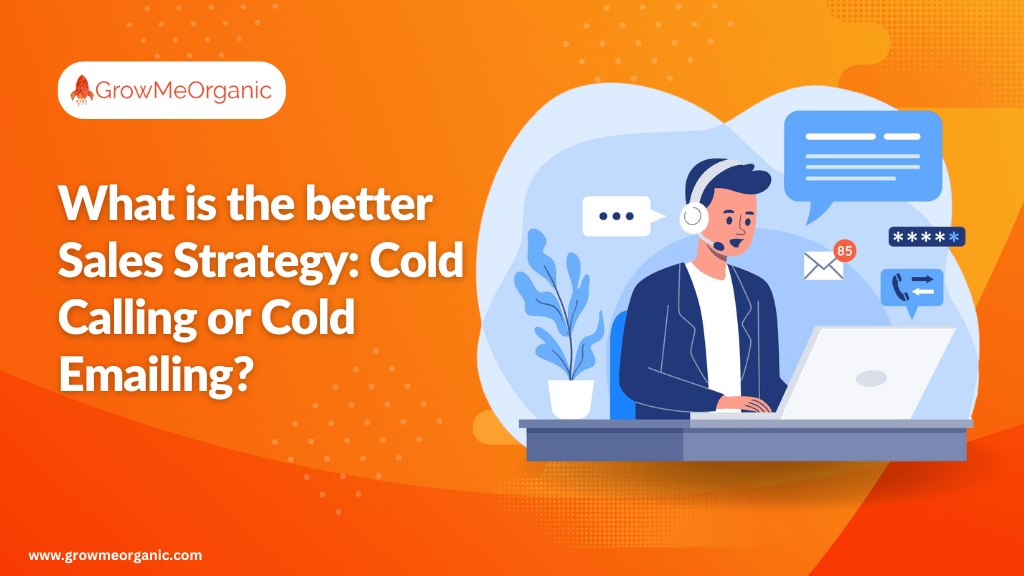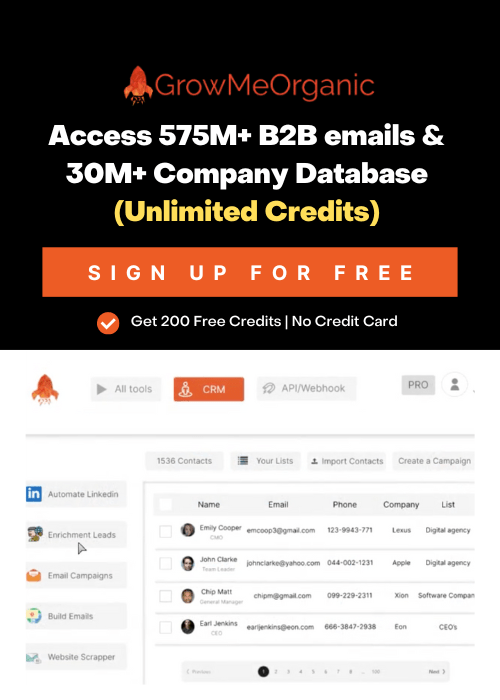Figuring out the best way to reach your potential customers can be tricky.
Do you begin right in with cold calls, or is it smarter to start with a cold email?
Cold emails are great for scaling and personalizing your outreach, while cold calls let you build rapport right away. Both have their perks, so which is better? The short answer: It depends.
Cold emailing and cold calling have strengths and weaknesses (we’ll discuss those later).
But here’s the bottom line: Cold outreach is a must for boosting sales and scaling your business.
So, which outbound sales method will get you the best results in 2025?
In this article, we delve into the cold calling vs cold emailing debate once and for all.
By the end, you’ll know exactly which approach is right for your business.
What is Cold Calling?
Cold calling is about reaching out to people you don’t know, aiming to pitch your product, and hopefully setting up a meeting or closing a sale.
It’s usually unannounced, catching your prospect off guard.
The process is straightforward:
Pick up the phone and call potential customers you’ve identified as a good fit.
Introduce yourself and your business.
You’ll quickly get a sense of whether they’re interested.
Like cold emails, a successful cold call gets straight to the point—who you are, the value you bring, and why they should talk to you.
What are the Pros and Cons of Cold Calling?
Now, let’s examine the pros and cons of cold calling.
Pros of Cold Calling
Cold calls, like cold emails, offer perks you shouldn’t overlook. Let’s check them one by one.
1 – Two-Way Communication in Real-Time is Possible
Cold calling lets you speak directly with potential customers, allowing them to ask questions and share concerns on the spot.
You can respond right away, creating a sense of trust and understanding. Hearing a real voice makes the conversation feel more genuine and helps build a stronger connection.
While emails can share information, they lack that immediate, personal touch that makes cold calling effective.
2 – Helps Understand Voice Cues
Hearing the other person’s voice on a call allows you to adjust your responses. Tuning into their tone can also help you catch subtle cues that guide your approach.
If they show interest in a topic, you can explore it further. If they seem confused, this is your chance to clarify and keep the conversation on track.
3 – Communication Becomes More Easy
When you talk to someone on the phone, they can feel the excitement in your voice.
That kind of connection is challenging to capture in an email. Cold calls allow prospects to learn about your product and experience your enthusiasm firsthand.
And that can make all the difference. People are much more likely to get interested when they hear genuine passion in your voice.
4 – Convey Simple Messages Quickly
When promoting something simple, a quick phone call can work wonders. You can share your message in just a few words and get an instant response.
But emails are different.
Without real-time feedback, you often need to add more context to clarify your point. This might mean writing longer emails, adding background info, or using examples to help your reader connect with your message.
The catch? Long cold emails just don’t work—people don’t have the time or patience for them.
That’s why cold calls are often better for delivering simple messages fast.
Cons of Cold Calling
Cold calls, like cold emails, come with their own set of challenges.
If you’re considering this technique, you must also know the potential downsides.
1 – The Majority of People Disapprove of Cold Calls
Getting an unexpected call during a busy day can feel like an interruption, especially from an unknown number.
You pick up, only to find someone trying to sell you something you weren’t even considering.
It’s no wonder most people find these unsolicited calls intrusive and often hang up quickly. This makes it incredibly challenging for salespeople to hit targets or make a positive first impression.
“Cold calls can attack your self-esteem and create a lot of anxiety and even trigger the “fight or flight” response.”
This is what BusinessStrategist, a user, said about the Cold calling vs cold emailing Reddit debate.
2 – Don’t Expect Many Responses
Cold calls often go straight to voicemail, and there’s a good reason. Most people don’t like them, especially during work hours.
Even if someone does pick up, don’t be surprised if they’re not thrilled to talk. They might be busy, uninterested, or just not in the mood for a sales pitch.
3 – Scaling Cold Calls Can Be Expensive
Want to increase your cold calling? Be prepared for the costs to add up quickly. It’s not simply about paying more salaries—there’s much more to it.
First, you must invest time and resources to find the right people. Once they’re hired, you’ll have to cover the costs of setting them up—workstations, tools, software, etc.
And don’t forget about training. New hires need to get familiar with the product, your sales strategy, the tools they’ll use, and be prepared on how to conduct a phone call.
All these expenses can make scaling your cold-calling efforts a significant financial investment.
4 – Reaching Decision-Makers Can Be Tough
When you make cold calls, you often deal with receptionists or assistants who screen calls and decide who gets through.
Their job is to protect decision-makers, like managers or bosses, from unexpected interruptions.
They might ask questions, put you on hold, or even reject your call before it reaches the person you want to talk to.
Navigating past these gatekeepers can be a real challenge if you aim to make sales over the phone.
What is Cold Emailing?
Cold emailing is about reaching out to customers you haven’t met yet. The aim? To introduce your business, showcase your products or services, and ideally, spark a conversation.
A strong cold email should:
- Clearly state who you are
- Highlight the value you offer
- Include a clear call to action (CTA)
The goal is to make the recipient want to open, read, and reply. This opens the door to building a relationship that could lead to a sale.
When done right, cold emailing is a powerful tool for generating leads and acquiring customers.
What Are The Pros And Cons Of Cold Emailing?
Let’s examine the key pros and cons of cold emailing to determine whether it’s the right sales outreach strategy for your business.
Pros of Cold Emailing
1 – Cold Emails Are Easily Scalable
With email automation tools like GrowMeOrganic, you can quickly send cold emails to thousands of prospects. Connecting multiple email accounts can increase your daily email output without hitting limits.
These tools also rotate accounts automatically, boosting your reach while maintaining your sender reputation—far more efficient than cold calling.
2 – Recipients Can Respond As Desired
Cold emails put the power in your prospect’s hands, letting them read and reply whenever it suits them. Unlike cold calls that interrupt their day, emails offer flexibility and control.
That’s why cold emails often get more responses—they’re less intrusive and more convenient for your prospects.
3 – More Details Can Be Included
Unlike cold calls, cold emails let you get deeper into what your business offers. You can explain why your product is valuable, share success stories, and back it up with data.
This gives your prospects the full picture. But with cold calls, you’ve got to be quick, which makes it tougher to convey your message fully.
4 – Helps Track Key Metrics
Email tools offer valuable insights into your cold emails, showing who opened them, clicked on links, and replied. This data helps closely track your campaigns and fine-tune them for better results.
5 – Cost-Effective Than Cold Calling
Cold calling requires dedicated salespeople to personally reach out to potential clients. Each call takes time, limiting the number of calls a salesperson can make daily.
If you want to reach more people, you’d likely need to hire more staff, which can be pricey.
Cold emailing, however, is a game-changer. Set up an email campaign, and you can reach countless potential clients automatically—no extra manpower needed.
You can contact thousands, even millions, at a fraction of the time and cost of calling each one individually.
Cons of Cold Emailing
1 – Cold Emails May Get Overlooked Sometimes
Inboxes are flooded with emails—newsletters, promotions, and personal messages. With so much noise, emails from unfamiliar senders often get ignored or deleted on sight.
This means your cold emails might struggle to stand out. So, don’t be surprised if only a handful of recipients open them and even fewer take the time to respond.
2 – Lack of Personalization Can Make Them Ineffective
Sending the same email to everyone without personalization often makes your message feel generic and spammy.
Email systems are intelligent and can flag these as suspicious, landing them in the spam folder.
To avoid this, personalize each email. Use their name, mention their company, or reference something relevant to them.
3 – Conveying Complex Information Can Take Extra Effort
Cold emails can be inconvenient when you’re trying to explain something complicated. With limited space and time, you risk losing your reader’s interest if your message is too dense or unclear.
You must engage your reader while delivering key points to make your cold emails effective.
This is where phone calls have an edge. They offer a two-way conversation so the recipient can ask questions and get immediate clarification.
4 – Cold Emails Might Miss the Primary Inbox
Sending cold emails frequently, especially if they’re pushy or use spammy language, can set off spam filters in email service providers (ESPs).
These filters keep unwanted emails out of the primary inbox. If your email triggers these filters, it will end up in the spam or junk folder.
Many recipients don’t check these folders regularly, so your well-crafted email might go unseen.
When Should You Cold Call?
Cold calling isn’t one-size-fits-all. Check out these top 5 criteria to see if it fits your business well.
Criteria #1 – When You Need A Quick Response
Cold calling is the best option to engage with prospects and get instant feedback.
Cold emails can get lost, ignored, or just sit in an inbox, but a direct phone call guarantees you’ll have that real-time conversation you need.
Criteria #2 – When Selling Complex Products or Services
Got something complex to sell? Cold calls might be your best bet.
Why? Because some products or services have so many details that an email just can’t do them justice.
On a call, you can SHARE the details, keep the conversation going, answer questions on the spot, and walk prospects through how everything works.
Criteria #3 – When You Need Immediate Feedback
Cold calls give instant insights into your prospect’s feelings about your offer.
Emails, on the other hand, leave you waiting and wondering. You don’t get to clear up any confusion or address hesitations immediately.
Criteria #4 – When You Need to Bring Your A-Game
You can reflect energy and excitement you don’t see in writing on a phone call. It’s your moment to shine and showcase the best features of your product or service with enthusiasm.
Think of it as painting a vivid picture with your words and excitement. This genuine passion can intrigue and engage your prospect with your offering.
When Should You Cold Email?
We’ve covered the ups and downs of cold emailing and shared tips to make it shine. Let’s see how to use cold emailing as your main outreach tool.
Criteria #1 – When Reaching A Lot Of Prospects
Cold emails are great when connecting with many potential customers.
Instead of making endless phone calls, which is super time-consuming, cold email software lets you simultaneously send tailored messages to an extensive list.
On the other hand, calling thousands of prospects isn’t practical or cost-effective.
Criteria #2 – When You Need to Share Attachments
Emails have a significant edge over phone calls: they let you attach extra materials.
Imagine this: with an email, you can add documents, presentations, videos, or even whole books to your message. You can’t do that on a call!
By sending all this extra info, you give people a clearer picture of your offering. The more they know, the more interested they’ll be.
Criteria #3 – When an Immediate Response is Not Needed
Email is perfect when you don’t need an instant reply. Unlike phone calls, which require both people to be available simultaneously, emails let recipients respond when it suits them.
They can read your message now and reply later, allowing them to process your thoughts and get back to you at their convenience.
Criteria #4 – When Tracking Your Email Campaigns
Cold emailing isn’t just about sending messages but also tracking their performance.
With cold email tools, you can easily see who opened your emails, clicked on links, or responded. Plus, you can run A/B tests to fine-tune your subject lines, opening lines, CTAs, and more to see what works best.
Criteria #5 – When Reaching Prospects Across Different Time Zones
Cold emails are your solution when struggling with different time zones.
Unlike cold calls, which require perfect timing, emails can be read and answered whenever suits the recipient. So, you can connect with anyone, anywhere, without the hassle of time differences.
Jose Victor Matos shares on Quora what is more important than choosing between cold calling or cold emailing.
“The main idea is to give them enough free time between different interactions, so they won’t feel annoyed. The line which divides good and bad is very thin, so take care not to make all your efforts be in vain, or even worse, against you.”
So, to effectively reach your customers, balance methods like cold calls and emails without overwhelming them, as dissatisfied customers can harm your reputation.
Cold Call vs Cold Email: 6 Key Differences
Both cold calling and emailing are excellent at generating business leads. However, there are a few differences between the two. Let’s examine them.
| Criteria | Cold Calling | Cold Emailing |
| Personal Experience | Offers direct, personal interaction. It allows for dynamic, on-the-spot adjustments. | Less personal but can still be tailored. Automation can help with personalization. |
| Disruptiveness | It can be intrusive and disruptive to the prospect’s routine. | Less intrusive; recipients can respond at their convenience. |
| Information Gathering | Allows real-time interaction and more personal insights. | Limited by text, however, it allows prospects to respond at their own pace. |
| Success Rate | Often low engagement; 0.3% success rate with cold calls. | 1% to 5% response rate; targeted emails can increase effectiveness to 15-25%. |
| Trackability | Track metrics like call volume, answer rates, and duration. | Easily track metrics like open rates, click-through rates, and responses. |
| Scalability | Scaling requires more salespeople and training, which can be costly. | Easier and more cost-effective to scale with email automation tools. |
Check out this YouTube Video by Karston Fox on cold calling vs cold emailing. Get the latest tips and tricks to ace your outreach game.
How to Boost Your Cold Call Success Rate?
If you’re cold calling, keep these tips in mind:
- Know Your Prospects – Research them beforehand. What are their interests? What challenges do they face? Tailor your pitch to something they’ll care about.
- Start Strong – Begin with something engaging. A thought-provoking question, an interesting fact, or a genuine compliment can grab their attention.
- Show the Benefits – Clearly and simply explain how your product or service can improve their lives. Make it about them, not you.
- Listen to Their Tone – Pay attention to how they sound. If they seem disinterested, adjust your approach to keep the conversation flowing.
- Ask Questions – After your intro and pitch, ask open-ended questions to get them talking. This helps build rapport and shows you’re interested in their needs.
- Don’t Be Pushy – Finish politely. Instead of pressuring for a sale, suggest a follow-up call or demo to provide more details.
How to Boost Your Cold Email Success Rate?
Here’s how to boost your cold email game:
- Personalize It: Use the prospect’s name, company name, and other relevant details. Make them feel like the email was crafted especially for them.
- Craft Catchy Subject Lines: Make your subject line stand out. Ask a question, include their name, or hint at something valuable. Skip the direct sales pitch.
- Use a Verified List: Ensure your email addresses are accurate and organized into targeted groups.
- Keep It Brief: Respect their time. Get to the point quickly without overwhelming them with text.
- Experiment with Offers: Try different approaches, like discounts, free downloads, or trials, to see what grabs attention.
- Follow Up Smartly: If you don’t get a response, send a follow-up or two, but vary your message and don’t overdo it.
- Monitor Results: Track open rates, clicks, and replies to figure out what’s working and what’s not.
Want more secrets for an effective outreach? Here are some by Charles Prescott.
“1. A strong message that clearly explains the problem that your solution is uniquely positioned to solve.
2. The patience to search until you find the right people within the right prospects.
3. The fortitude to deliver your message multiple times through multiple channels in the face of constant rejection until you get your first meeting.”
Whether in person, email or a cold call, sticking to these secrets can work in your favor.
Email Prospecting vs Cold Calling: Which Sales Strategy Should You Choose?
Why choose just one when you can use both? Mixing cold outreach methods can enhance your sales and marketing efforts.
The key is to tailor each approach to fit the situation:
1. What’s Your Outreach Goal?
So, what’s your aim? Are you looking to book a meeting or just get some quick answers? Knowing this will help you choose between a cold call or an email.
It’s also helpful to determine whether your request is strong or weak.
A strong ask could be a request for a product trial, which requires more commitment. A weak ask might be something simpler, like asking for feedback.
Go ahead and make that call for a strong ask. It’s easier to get a “yes” over the phone when you’re asking for more.
If it’s a weak ask, stick to email. A brief email is perfect for quick requests and saves your prospect’s time.
2. Understanding Your Buyer Persona
A buyer persona is a semi-fictional profile of your ideal customer crafted from market research and data about your current clients.
Your persona’s communication preference is crucial. For instance, 79% of millennials prefer being contacted through brand emails. If your target audience skews younger, keep this in mind.
Conversely, older professionals or those in customer-focused roles might be more comfortable with phone calls, as they’re used to them and less daunted by B2B sales conversations.
Tailoring your approach to fit these preferences can make your communication more effective.
Mark Mehling pointed out that there is more than just the chosen delivery service.
“What makes and ad work, whether in calling or emailing, is the message and the targeting. it’s not the delivery service.”
So, in addition to choosing a delivery service, keep your message and targeting in place to achieve the desired results.
Conclusion
“Bro, it’s 2024, we do not cold call potential employers EVER, that’s a fast track to being ignored. Emails only.”
Relax! That’s what a Reddit user said about cold calls. However, you can choose for yourself.
Both cold emailing and cold calling have their pros and cons.
Cold emails offer flexibility and scalability, while cold calls allow you to make instant, dynamic connections that can raise interest immediately.
The Best Strategy?
Combine both cold outreach tactics, increasing your chances of connecting with potential clients.
Tools like GrowMeOrganic can make your outreach seamless.
With features like auto-personalization and behavior-based campaigns, GrowMeOrganic covers you from start to finish.
FAQs
Q 1. What Is More Effective Cold Calling Or Emailing?
Start with a call if your product thrives on personal and real-time interaction. If not, initiate things with an email to make that first connection. Ideally, mix both—follow-up calls with emails or vice versa—until your prospects warm up.
Q 2. Should You Email Or Cold Call First?
It depends on your approach: if personal interaction is key, start with a cold call. Email is a better choice for establishing a broader connection first. Ideally, both methods should be used together to maximize impact.
Q 3. How Many Cold Emails Should You Send Per Day?
If you’re new to cold emailing, start small with 10-20 emails daily. Once you get the hang of it and incorporate some automation, you can gradually increase your daily email count.
Q 4. Is It Better To Call Or Email A Prospect?
Cold emails are great for scaling and personalizing your outreach, but cold calls let you connect with prospects and build rapport immediately. Both have their perks, depending on what you’re aiming for!
Q 5. Is Cold Calling Illegal?
Cold calling isn’t illegal, but there are rules you need to follow. These laws protect people’s privacy and keep unwanted calls at bay. Ensure you stick to the regulations, and you’ll be good to go.
About Post Author
Anant Gupta
Growth Hacker, Marketing Automation Enthusiast & Founder of GrowMeOrganic









